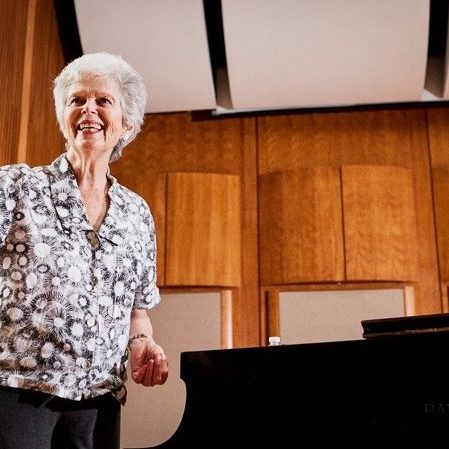FAQ
Find answers to common questions including: How is Dalcroze different from other music education methods? How does it differ from dance? How difficult is Dalcroze Education?
Dalcroze education reminds students that they have an innate musical sense already. They only need to be aware of it. Through joyful movement and improvisation, students nurture the creativity and imagination that exists inside everyone.
Dalcroze education is appropriate for any age and any level, from pre-kindergarten through seniors. It can be used with children with special needs and people with disabilities. Participants experience personal discoveries at their own pace, so a group class will have as many profound “aha” moments as participants.
Dalcroze education is infinitely adaptable. It does not require any specialized equipment to succeed, and can work in nearly any space.
Dalcroze and dance both use expressive movement, but Dalcroze focuses on using movement for personal growth and musical enrichment. Movements in a Dalcroze class are specifically tied to musical elements. Public “performance” is generally not a goal.
However, many of the skills developed in Dalcroze classes transfer to dance. Prominent dancers and choreographers have studied Dalcroze, including Meredith Monk, Doris Humphrey, and Ruth St. Denis.
No—you do not need to be a dancer to experience Dalcroze. With guidance from their teacher, each student develops their own movement vocabulary.
Participants should wear clothing suitable for unrestricted movement. In many classes, the teacher invites students to remove their shoes and socks.
The Dalcroze method is challenging, but your personal journey drives growth. Many first-time participants remark that they had to “learn to embrace mistakes and failure,” especially when developing coordination between mind, ear, and body. Dalcroze education does not demand perfection, because it is in the challenges that students grow.
There are no “wrong ways” to experience music in your body. Instead, students always strive to discover a more authentic experience.
Dalcroze eurhythmics and eurythmy have different goals, philosophy, and vocabulary, and are not affiliated.
Dalcroze eurhythmics guides participants to discover the music within their body through movement. It teaches skills that have long-reaching applications to music, dance, and cognitive function. It is processed based, not performance based.
Eurhythmy is an expressive art form developed by Rudolf Steiner. Though it does have pedagogical uses, it is primarily considered a performance art. Like Dalcroze eurhythmics, it seeks to embody music through movement, but eurythmy leads to a public performance.
Dalcroze is not affiliated with Waldorf education.
The Dalcroze Society of America frequently connects workshop presenters with hosts.
Find a Workshop Leader or contact us for more information.
Dalcroze education is recognized in many K-12 and collegiate curriculums and is incorporated into private studio teaching. Visit our Teacher Training page for more information.
Have more questions? Get in touch with us.
Join the DSA
Support the work of the DSA by becoming a member.
